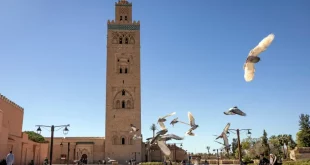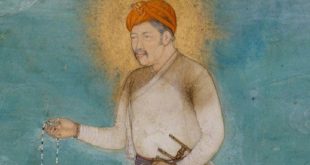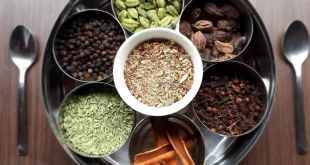 The sun is slowly slipping down behind the majestic mountains. In just a few minutes it will set. While the city is slowly coming to the evening stand still, you see children wearing scarfs and koufiyyahs (Muslim headdress for males) and dressed in thoabs (long garments) scurrying across the streets of suburbia delivering plates of treats to their neighbours; a custom that could date back to the time when Muslims first arrived at the Cape.
The sun is slowly slipping down behind the majestic mountains. In just a few minutes it will set. While the city is slowly coming to the evening stand still, you see children wearing scarfs and koufiyyahs (Muslim headdress for males) and dressed in thoabs (long garments) scurrying across the streets of suburbia delivering plates of treats to their neighbours; a custom that could date back to the time when Muslims first arrived at the Cape.
The little plates the children are carryings fill the neighbourhood with smells of samoosas, sweet fritters, pancakes and doughnuts.The smell of Ramadan is now in the air. A few minutes after this hive of activity the streets are desolate almost deserted. And then we hear it, the echoes of the Adhaan coming from the distance.The Mua’dhin’s voice is swiftly carried by the wind. Allahu Akbar, Allahu Akbar. No words are sweeter to the fasting person.
There is just something about Ramadan in South Africa; the way we embrace it like the warmth of an old friend. Everyone is more hospitable, inviting and welcoming.
Celebrating Ramadan on the SA iftar tables
We hate to admit it, but we put much emphasis on food during Ramadan. In Cape Town, you will probably be invited out every weekend to family or a friend’s home because people want to share their meals and partake in the celebration of the holy month with you.
In Johannesburg, preparations start a month before Ramadan . This is when the kitchens in most Muslim homes are like a mini production line at a factory as the ladies experiment with every kind of savoury they can think of from cheese and corn samoosas to chicken stuffed croissants.
Interestingly enough though, Halaal butcheries reveal that in the two months leading up to Ramadan they sell almost 500 tons of chicken fillets in Johannesburg alone.
South African Muslims have a rich cultural background. Muslims from India, Malaysia and Java came as slaves to serve the British and Dutch. While many still cling to traditional foods during Ramadan, a more cosmopolitan approach to food seems to be creeping on to Iftar tables lately.
In Johannesburg and Durban, most of its Muslim population have cultural roots from India so we still find tables having the usual suspects like samoosas, bhajias, (deep fried spinach fritters made with pea flour) and meat pies. But in recent times, we find cocktail pizzas, mini pitas, croissants, spring rolls and sandwiches also becoming a firm favorite amongst the younger generation.
And even in these cold winter months, creamy Bombay Crush milkshake definitely adds a tinge of colour to drab winter tables. Bombay Crush is a rose flavoured milkshake made with full cream milk, vanilla ice cream, rose syrup and, sabja (basil) seeds.
Usually after breaking fast with dates and water, a few savouries are eaten before proceeding to make the Maghrib prayer. After the prayer the main meal is served, which would consist of the usual rice dishes to curries, roti (unleavened bread) or perhaps grilled chicken and steak.
On The weekends in Ramadan we find individuals selling containers of Haleem in Muslim neighbourhoods like Mayfair and Fordsburg. Haleem is a spicy thick barley broth, which is made with either chicken or lamb. The spiciness and flavour is enhanced with a squeeze of lemon just before serving the soup.
This hearty and nourishing soup is a firm favourite in most Indian homes for Iftar. Owner of Simply Delish catering services, Amina Hargey, who is originally from Durban and now resides in Cape Town says, “My brother Zaafar and I would always sit at the table 10mins before Iftar. We would prepare our Haleem bowls, pour us a glass of Bombay Crush milkshake and decide what we're going to eat first and how many and basically just continuously check the time every four seconds in anticipation.”
Moving down South, we find that the Muslim population of Cape Town is still clinging to food traditions passed down from their Javanese or Malaysian forefathers.
On the 15th night of Ramadan for Iftar, we find many households have boeber bubbling in their stoves. Boeber is a sweetened rose scented milk drink thickened slightly with sago and vermicilli strands. This dish marks the middle of the fast and it is tradition that is celebrated in many homes in Cape Town, till today.
Fatima Sydow, food writer and owner of the Facebook page Cape Malay Cooking with Fatima Sydow says,” Everyone knows Boeber night in Cape Town. The great part of it was everyone would get their share of it even our non-Muslim neighbors.”
Fatima, remembers spending time in the kitchen with her mother as a child in Ramadan, “It would be late afternoon that she would call us to the kitchen to assist her with what would be eaten that evening. And without fail, it was and still this day, a simple split pea and vegetable soup with lamb marrow bones and savories.”
There would be no cooked meals like rice or stews for Fatima. The soup, perhaps a cake and savories would suffice a full meal.
Times have changed. Life has become rushed and chaotic. Many are still working and some have to still attend school during Ramadan. Currently, we also have to endure planned power outages due to a strained electricity supply. But the spirit of giving remains strong. There is an innate need amongst South African Muslims to keep this month festive. And we do this, the way we always have, with food.
Ramadan Mubarak!
Source : http://www.onislam.net
Post Disclaimer | Support Us
Support Us
The sailanmuslim.com web site entirely supported by individual donors and well wishers. If you regularly visit this site and wish to show your appreciation, or if you wish to see further development of sailanmuslim.com, please donate us
IMPORTANT : All content hosted on sailanmuslim.com is solely for non-commercial purposes and with the permission of original copyright holders. Any other use of the hosted content, such as for financial gain, requires express approval from the copyright owners.
 Sri lanka Muslims Web Portal Diversity and Inclusiveness
Sri lanka Muslims Web Portal Diversity and Inclusiveness



